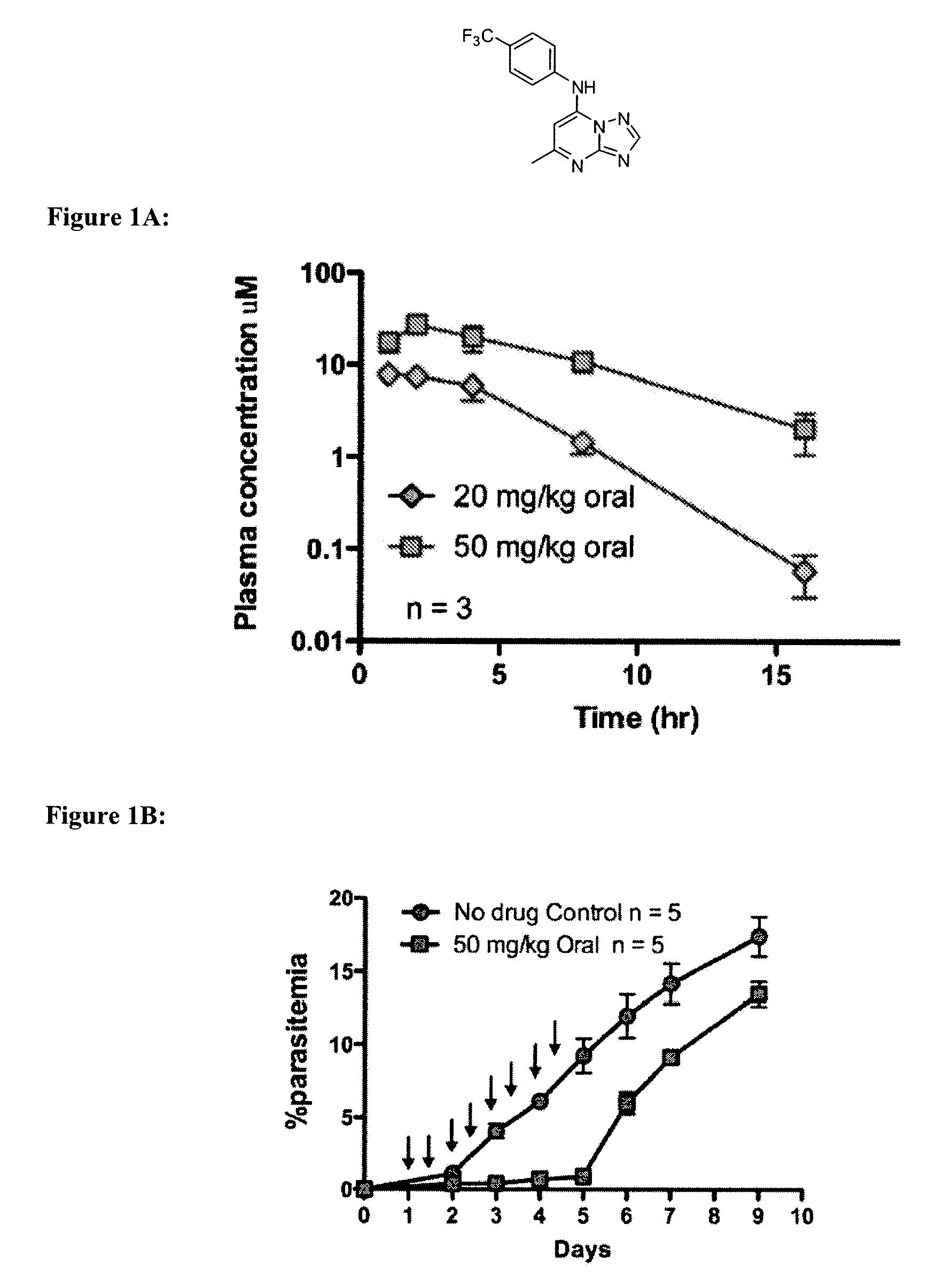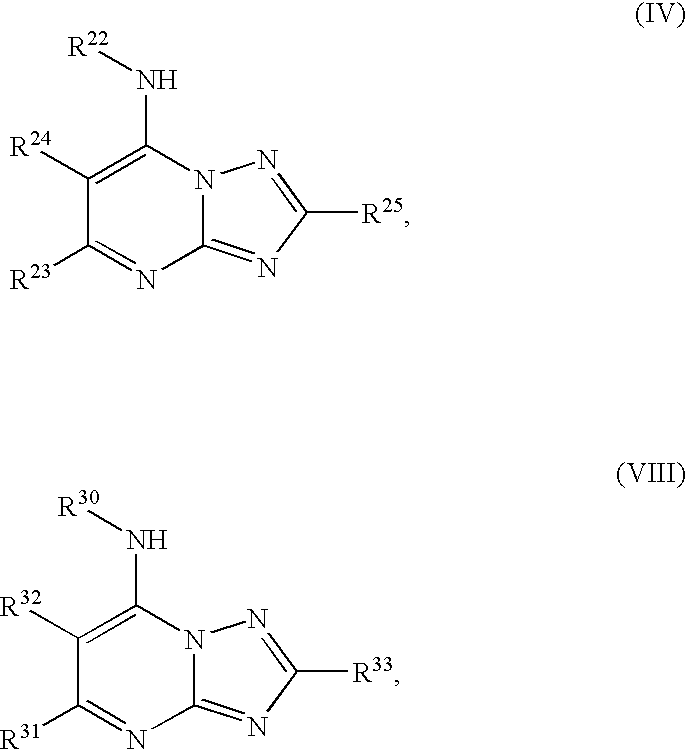Dihydroorotate dehydrogenase inhibitors with selective anti-malarial activity
a dihydroorotate dehydrogenase and inhibitor technology, applied in the direction of antiparasitic agents, biocides, drug compositions, etc., can solve the problems of clinical symptoms, risk of contracting disease in travelers to endemic regions, and rupture and subsequent reinfection of other red blood cells
- Summary
- Abstract
- Description
- Claims
- Application Information
AI Technical Summary
Benefits of technology
Problems solved by technology
Method used
Image
Examples
example 1
Synthesis and Characterization of Compounds According to Formulae I-VIII
[0181]Compounds according to Formulae I-II of the invention and biological activities are presented in Tables 1 below.
[0182]
TABLE 1Compounds structure and activity.IC50IC50EC50PfDHODHhDHODHP. falciparumNoteStructure(μM)(μM)(μM)0.44 ± 0.2 >2001.62-methyl-N-(naphthalen-2-yl)-9H-purin-6-amine0.12 ± 0.02>2002,5-Dimethyl-[1,2,4]triazolo[1,5-α]pyrimidin-7-yl)-naphthalen-2-yl-amine0.10 ± 0.0 >2000.23 ± 0.00142,5-Dimethyl-[1,2,4]triazolo[1,5-α]pyrimidin-7-yl)-anthracen-2-yl-amine
Synthesis of 2-methyl-N-(naphthalen-2-yl)-9H-purin-6-amine
[0183]
[0184]This compound is synthesized according the scheme above and is characterized as follows: melting point: 85° C. 1H NMR (300 MHz, DMSO-d6): δ 10.45 (brs, NH, exchangeable), 8.65 (s, 1H), 8.57 (s, 1H), 7.91-7.99 (m, 4H), 7.46-7.56 (m, 2H), 2.71 (s, 3H); MS m / z: 276.1 (M+H+).
Synthesis of 2,5-Dimethyl-[1,2,4]triazolo[1,5-a]pyrimidin-7-yl)-naphthalen-2-yl-amine
[0185]
[0186]This compo...
example 2
Biological Evaluation of the Compounds of Formulae I-VIII
[0271]In addition to the extensive literature disclosing the role of DHOHD in malaria, described here are assays useful for testing the compounds of the present invention.
Assays
I. Measurement of Enzyme Inhibition.
[0272]For studying inhibition of Plasmodium or human DHODH enzyme, two assays that are in routine use are described, for example, in Baldwin, et al. (2002) J Biol Chem., 277, 41827-41834, and Baldwin, et al. (2005) J Biol. Chem., 280. 21847-21853.
[0273]Briefly, these assays are as follows:
[0274]A calorimetric assay that monitors 2,6-dichloroindophenol (DCIP) reduction at 600 nm (e=18.8 mM−1cm−1) is used for inhibition studies. Briefly, the assay solution contained 100 mM HEPES, pH 8.0, 150 mM NaCl, 10% glycerol, 0.1% Triton X-100, 20 micro molar COQD (coenzyme QD), 200 micro molar L-dihydroorotate, and 120 micro molar DCIP. Reactions are initiated by addition of enzyme to a final concentration in the range of about 5 ...
PUM
| Property | Measurement | Unit |
|---|---|---|
| melting point | aaaaa | aaaaa |
| melting point | aaaaa | aaaaa |
| melting point | aaaaa | aaaaa |
Abstract
Description
Claims
Application Information
 Login to View More
Login to View More - R&D Engineer
- R&D Manager
- IP Professional
- Industry Leading Data Capabilities
- Powerful AI technology
- Patent DNA Extraction
Browse by: Latest US Patents, China's latest patents, Technical Efficacy Thesaurus, Application Domain, Technology Topic, Popular Technical Reports.
© 2024 PatSnap. All rights reserved.Legal|Privacy policy|Modern Slavery Act Transparency Statement|Sitemap|About US| Contact US: help@patsnap.com










